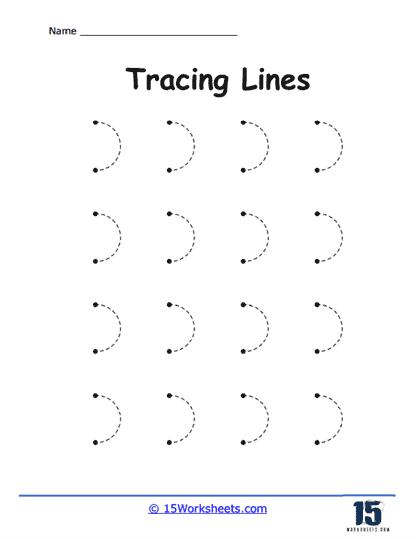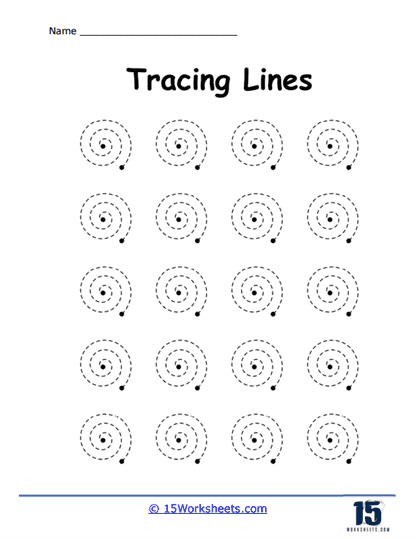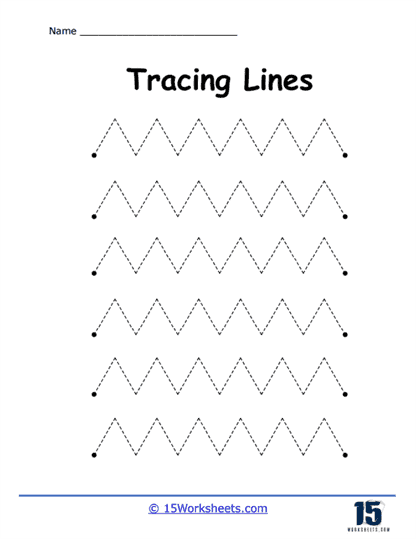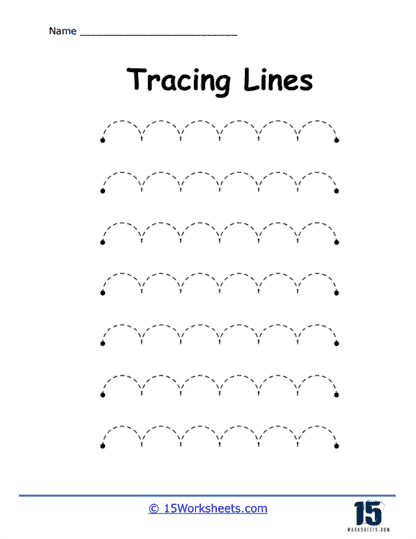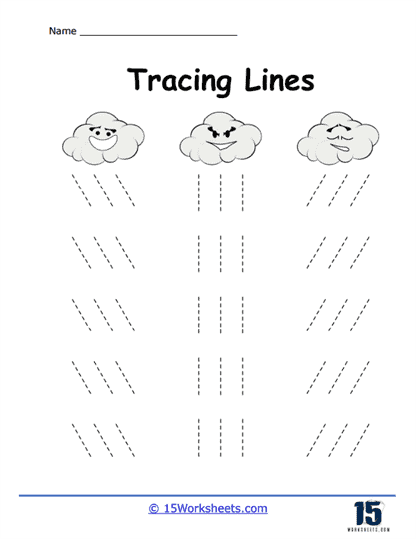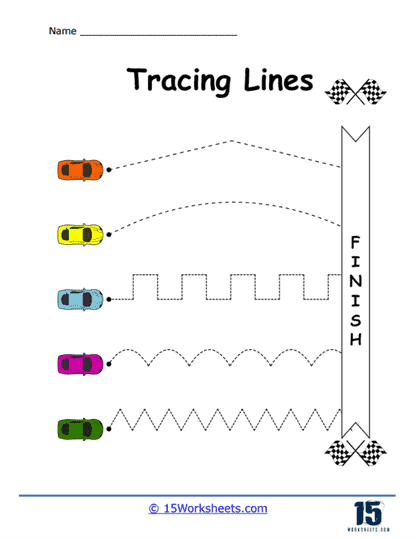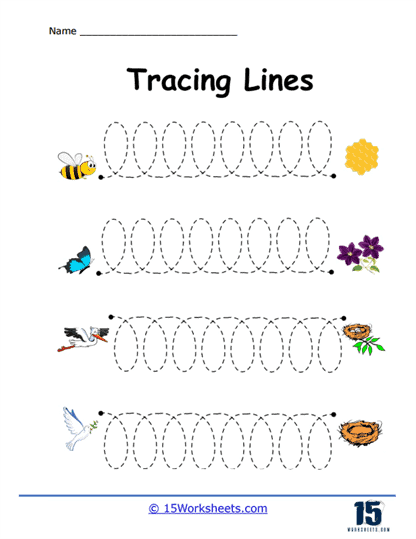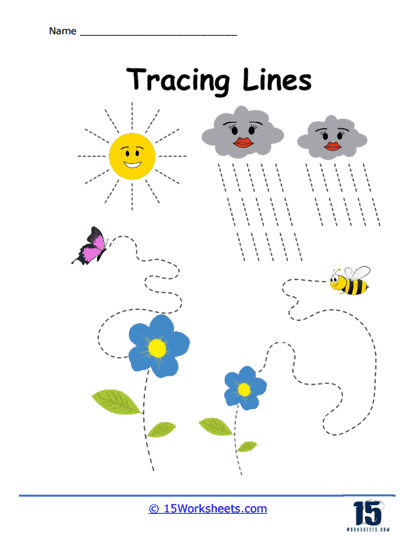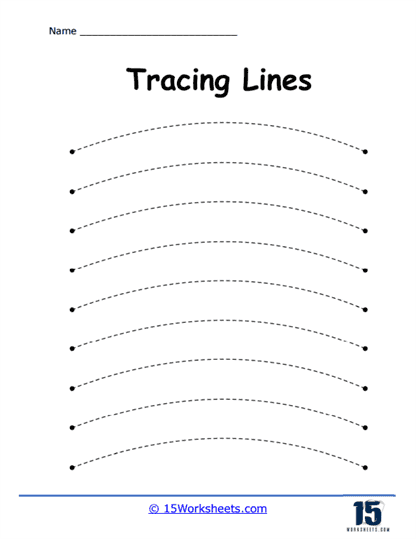Line Patterns Worksheets
About These 15 Worksheets
In at least 1,200 words, explain what Line Patterns Worksheets are. Describe all of the different types of exercises that you would find on these types of worksheets. Also explain how practicing with these worksheets can help students improve their understanding of patterns, numeracy, number sense, problem solving, and critical thinking skills. Use the active voice.
Types of Exercises
Identifying Line Patterns – These basic exercises introduce students to different types of line patterns, such as straight, zigzag, curved, and intersecting lines. Students learn to recognize and name the patterns, laying the groundwork for more complex pattern recognition.
Completing Line Patterns – Students are presented with a sequence of lines that follow a certain rule, with one or more lines missing in the sequence. Their task is to draw the missing lines based on the established pattern, enhancing their ability to predict and extend patterns. Students explore patterns created by intersecting lines, such as grids and networks. This type of exercise develops an understanding of geometric properties and relationships between lines.
Creating Line Patterns – Beyond simply identifying or completing patterns, students are encouraged to create their own line patterns. This exercise fosters creativity and allows students to apply their understanding of patterns in a more open-ended manner. Exercises that involve creating patterns using a combination of line types (e.g., straight and curved lines) challenge students to think more abstractly and creatively about pattern design.
Mirroring and Rotating Line Patterns – In these exercises, students are given a line pattern and asked to draw its mirror image. This not only reinforces pattern recognition but also introduces basic concepts of symmetry and reflection. Students learn about rotational symmetry by rotating a given line pattern around a point. This exercise enhances spatial reasoning and introduces students to the concept of transformations in geometry. These exercises challenge students to enlarge or reduce a line pattern while maintaining its proportions. Students learn about scale and proportion, important concepts in both geometry and real-world applications.
Decoding Line Patterns – Some worksheets include puzzles where students must decode a message or solve a problem by correctly identifying or following a line pattern. This type of exercise integrates pattern recognition with logical reasoning and problem-solving skills. These exercises connect line patterns to real-world applications, such as mapping, architecture, and art, demonstrating the practical importance of understanding patterns in everyday life.
How These Worksheets Help
Enhances Pattern Recognition – Line Patterns Worksheets help students develop the ability to recognize and predict patterns, a critical skill in mathematics and science. Recognizing patterns allows students to make sense of complex information and find order in chaos.
Improves Numeracy and Number Sense – While directly focused on geometric patterns, working with line patterns also reinforces numeracy skills. Students learn to count repetitions, measure distances, and understand geometric concepts, contributing to a well-rounded mathematical foundation.
Boosts Problem-Solving Skills – Many line pattern exercises require students to solve puzzles or complete patterns in a way that is not immediately obvious. This nurtures the ability to approach problems methodically, applying logical steps to find solutions.
Develops Critical Thinking – Identifying, extending, and creating line patterns demand analytical thinking. Students must evaluate information, make inferences, and justify their reasoning, which are key components of critical thinking. Encouraging students to create their own line patterns or find multiple solutions to a problem fosters creativity. They learn to see mathematics as a creative endeavor, not just a set of rules to follow.
Encourages Mathematical Reasoning – Working with line patterns strengthens mathematical reasoning by helping students understand geometric properties and relationships. This foundational skill is essential for tackling more complex mathematical concepts. Success in completing line pattern worksheets can boost students’ confidence in their geometric and mathematical abilities. This sense of achievement motivates them to engage more deeply with mathematical concepts. Understanding line patterns lays the groundwork for more advanced studies in geometry, algebra, and beyond. These worksheets provide a practical foundation for exploring concepts such as transformations, symmetry, and the properties of shapes.






